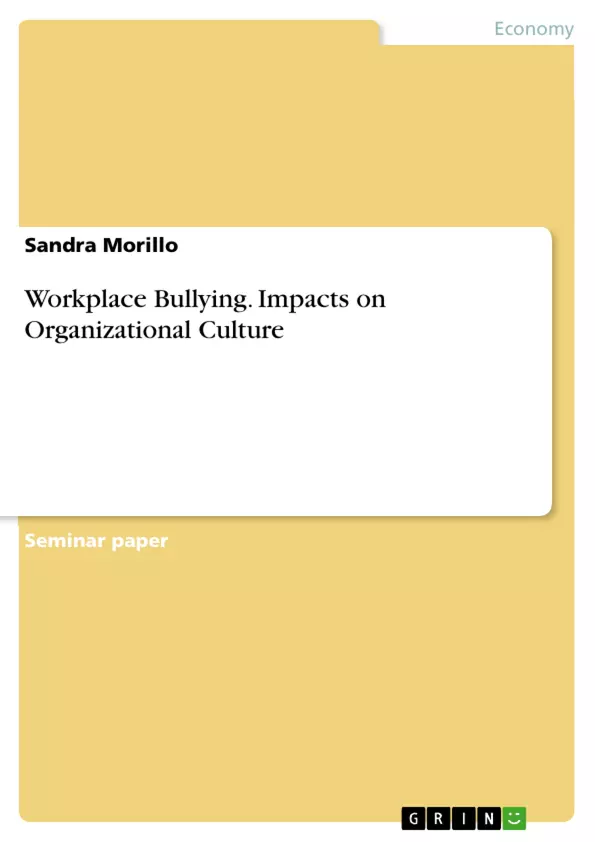This text discusses the impacts of workplace bullying on organizational culture and ways to promote it.
Today, the pressure on employees constantly grows. On the one hand automation leads to cutoffs in employment; on the other hand the internalization of companies often results in hiring foreign workers, thus diversity increases.
In the last few years, the economic crisis additionally has increased the pressure. However, neither the automation nor the internalization can be prevented. If the company does not act punctually and supports the employees adequately to cope with the pressure, workplace bullying may arise.
Inhaltsverzeichnis (Table of Contents)
- Introduction
- Definition of Bullying
- How does the organizational culture promote workplace bullying?
- The impacts of workplace bullying on the organizational culture
- Conclusion
Zielsetzung und Themenschwerpunkte (Objectives and Key Themes)
This coursework aims to explore the relationship between workplace bullying, organizational culture, and their mutual impacts. It examines how organizational culture can foster bullying behavior and analyzes the resulting consequences for the organizational culture itself, differentiating between economic and psychological effects.
- Definition and manifestations of workplace bullying
- The role of organizational culture in promoting bullying
- Consequences of workplace bullying on organizational culture
- The impact of diversity and intolerance on bullying behavior
- Models and theories explaining the link between organizational culture and workplace bullying
Zusammenfassung der Kapitel (Chapter Summaries)
The Introduction provides a context for workplace bullying, highlighting increased pressures on employees due to automation, globalization, and economic crises. It sets the stage for a definition of workplace bullying and an exploration of its causes and effects within the organizational culture.
The section on the Definition of Bullying clarifies the term, drawing upon various sources to define workplace bullying as repeated, health-harming mistreatment, emphasizing the target's inability to defend themselves. It further details verbal and non-verbal bullying tactics.
The section, How does the organizational culture promote workplace bullying? delves into the mechanisms by which organizational culture can encourage bullying. It examines models illustrating how factors such as a goal-oriented culture, task-related leadership, and a lack of emphasis on communication and ethical behavior can create an environment conducive to bullying.
Schlüsselwörter (Keywords)
Workplace bullying, organizational culture, diversity, intolerance, task-oriented culture, communication, ethical behavior, economic consequences, psychological consequences, models of bullying, interpersonal conflict.
- Quote paper
- Sandra Morillo (Author), 2012, Workplace Bullying. Impacts on Organizational Culture, Munich, GRIN Verlag, https://www.grin.com/document/1000537



